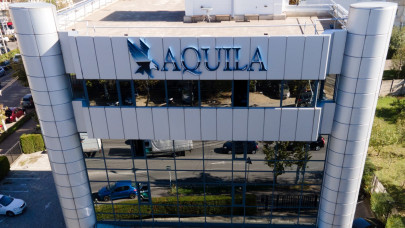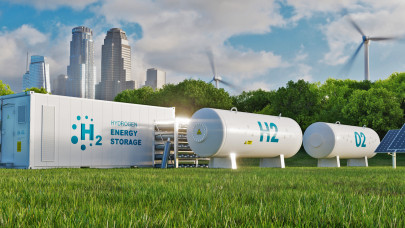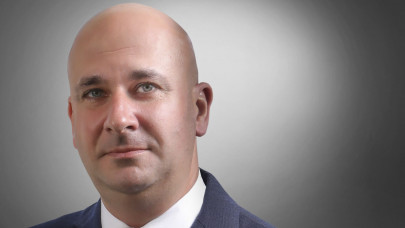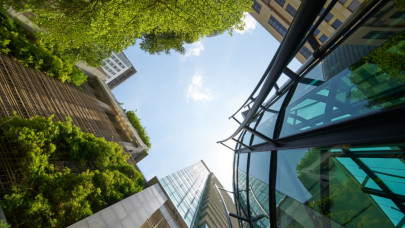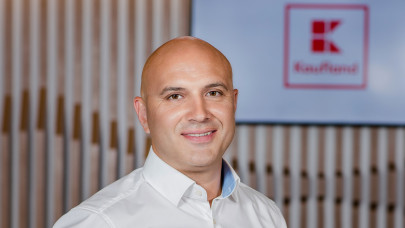The company published its Strategy for 2030 back in 2021. Which are the main pillars of the Sustainability Strategy?
Sustainability is fully embedded in our business strategy, with a focus on the transition to low-carbon business, running responsible operations, innovation & digitalization, and fostering people and communities. For each of these focus areas, we have formulated concrete commitments, targets, and actions to be achieved by 2030, which mark OMV Petrom's contribution to the UN 2030 Agenda for Sustainable Development.
We concentrate our sustainability efforts on five focus areas:
- Health, Safety, Security, and Environment (HSSE): Our people's well-being and safety, as well as the integrity of the company's operating facilities and a proactive risk management system, are of paramount importance for fulfilling our HSSE vision: "ZERO Harm - NO Losses"
- Carbon Efficiency: OMV Petrom focuses on improving the carbon efficiency of its operations and product portfolio. We are fully committed to acting on climate change mitigation and responsible resource management.
- Innovation: OMV Petrom's efforts are aimed at developing an innovation-based culture, enhancing the digital skills of its employees, and implementing new technologies in business.
- Employees: We put people at the core of our business and want to create a workplace that is fulfilling, diverse, and learning-oriented.
- Business Principles and Social Responsibility: OMV Petrom strives to uphold equally high compliance standards at all locations, and the Code of Conduct applies to all employees and suppliers. OMV Petrom acts responsibly both in the way natural resources are used in our operations, and in the way we permanently build relationships based on trust and honesty with all stakeholders.
In July 2020, OMV Petrom became the first Romanian company to support the Recommendations of the Task Force on Climate-related Financial Disclosures (TCFD). This voluntary engagement demonstrates our commitment to giving more visibility to our climate-related initiatives, evaluating, disclosing, and taking action on climate-related risks and opportunities.
OMV Petrom has been included by Sustainalytics in the 2023 Top-Rated ESG Companies List. As a result of this evaluation, OMV Petrom is currently in the top 5% of the Oil & Gas Producers assessed by Sustainalytics. The score obtained, 22.5, places the company in a medium risk category, with risk management rated as strong.
We have also been awarded for the best ESG performance by the Bucharest Stock Exchange, which recognizes the best performers on the capital markets. At this year's edition, OMV Petrom was the proud winner of the newly introduced "Award for the best ESG evaluation (Management score)".
Considering our relevance in Romania, we always have a two-fold approach, that considers both the growth and transformation of the business, as well as our social impact. In the last 14 years, we supported causes that are important for the Romanian communities in the areas of environment, health, and education in the amount of €120 million.
What investments is the company planning this year in terms of sustainability?
We are pursuing our Strategy 2030 targets by focusing on sustainability projects. For example, the partnership with CE Oltenia aims to reach a total capacity of ~450 MW through four photovoltaic parks. The total investment amount is over €400 million. The parks represent ~30% of Romania's installed solar power capacity. It is an important step towards our 1 GW target for 2030, which will represent more than 10% of Romania's estimated solar capacity.
In addition, we are equipping our filling stations with photovoltaic panels – at the end of 2022 we had PVs installed in 150 OMV & Petrom filling stations in Romania. By the end of 2023, the number of filling stations equipped with photovoltaic panels is expected to increase to 190 units, thus covering around 30% of the OMV and Petrom-branded filling stations in Romania. We plan to install PVs in half of our filling stations.
At the end of 2022, we installed 34 charging stations in Romania with fast and ultrafast charging points. We will continue the installation of EV charging stations and the plan is to double the existing number of charging points in 2023.
In 2023, we have an investment plan of around RON 6 bn, ca 70% higher than 2022 investment levels. This will support the progress of ongoing projects, the launch of new low-carbon projects as well as the modernization of our assets.
What will be the main actions taken toward the reduction of carbon emissions this year?
When talking about the future of energy and a cleaner environment, we have been focused on this for some time. We had a target in place for 2025, to reduce carbon emissions by 27% compared to 2010. Through sustained investments in recent years, we achieved this ahead of plan and set new and more ambitious targets as part of our strategy for 2030. We now aim to reduce the carbon emissions from our own operations by 30% by 2030, compared to 2019. Our ambition for 2050 is to reach carbon neutrality from our own operations.
In 2022, we continued the implementation of projects aiming to reduce flaring, venting, and fugitive methane emissions by upgrading, replacing, and/or optimization of gas processing and transportation infrastructure. We target to have no new projects with routine flaring and venting practice and phase out existing routine flaring and venting latest until 2030.
Petrobrazi was the first refinery in Romania to produce sustainable aviation fuel. What amount of sustainable aviation fuel has OMV Petrom produced so far and what is the target for 2023? Do you consider producing sustainable car fuel?
We focus on energy transition to have a sustainable refining and fuel business by taking advantage of unique feedstock availability for biofuels (advanced bioethanol and SAF/HVO - hydrotreated vegetable oil). The feedstock used in the biofuel plants for advanced ethanol is cellulosic biomass and residues from local agriculture (straws). Romania has a competitive advantage due to the availability of this feedstock, and we will integrate it into the local & circular economy.
By developing a significant biofuel capacity, we start integrating circular economy into our core business, while using advanced technologies. We target the production of 150 kt/y of advanced bioethanol and 450 kt/y SAF/HVO by 2030. Petrobrazi became the first ISCC-certified refinery in the country to produce SAF and HVO by co-processing raw materials of a biological nature. The SAF volumes produced at the Petrobrazi refinery for commercial flights will help reduce CO2 emissions by about 70% compared to conventional fuel.
How, in your opinion, the oil and gas industry is doing in achieving sustainability goals compared to other industries in Romania?
The energy transition is a journey that we all need to embark on: as companies – to innovate and roll out new energy solutions for our customers; as Governments – to create the right framework for attracting EU funds, developing infrastructure, and stimulating investments; and as individuals to adopt new energy solutions and more responsible energy consumptions behaviours.
As an energy company, we are committed to supporting the country's transition to a low-carbon economy and we put forward the most ambitious investment plan in Romania amounting to €11 billion.
Given our impact as an energy company, we focus on all three key areas: environment, social, and governance.
How is OMV Petrom working together with its business partners to decrease its carbon footprint?
We have partnerships that are meant to lower the carbon footprint. As mentioned, we work with the CEO to lower the carbon footprint of the coal producer and with Romgaz to develop the largest local natural gas reservoir, Neptun Deep which will be a secure source of lower GHG energy.
We also joined the ConsenCUS project, an international research and innovation program in the field of carbon capture for use and/or storage (CCUS), financed by the program Horizon 2020. As part of this project, we will test at the Petrobrazi refinery an innovative technology for capturing carbon emissions from the refining process.
How supportive is the regulatory environment in Romania for companies wanting to invest in sustainability?
Energy companies operate in a challenging context, with the international energy market fundamentals going through profound changes and the high fiscal and regulatory volatility adding even more complexity.
Romania's oil and gas and power sector is among the most taxed and regulated in Europe. The effective tax rate for natural gas in Romania was already 3 times higher than the EU average in 2018. In 2022, in Romania, the fiscal and regulatory framework saw approximately 20 changes.
Besides, the energy transition and the EU funds available for modernization, create opportunities for economic growth, considering Romania's high potential for natural gas – base for a hydrogen economy, for bioethanol as well as for photovoltaics. Therefore, it is important that any regulatory and fiscal changes are done with proper consultation with the industry, considering their implications for the market and investments.


